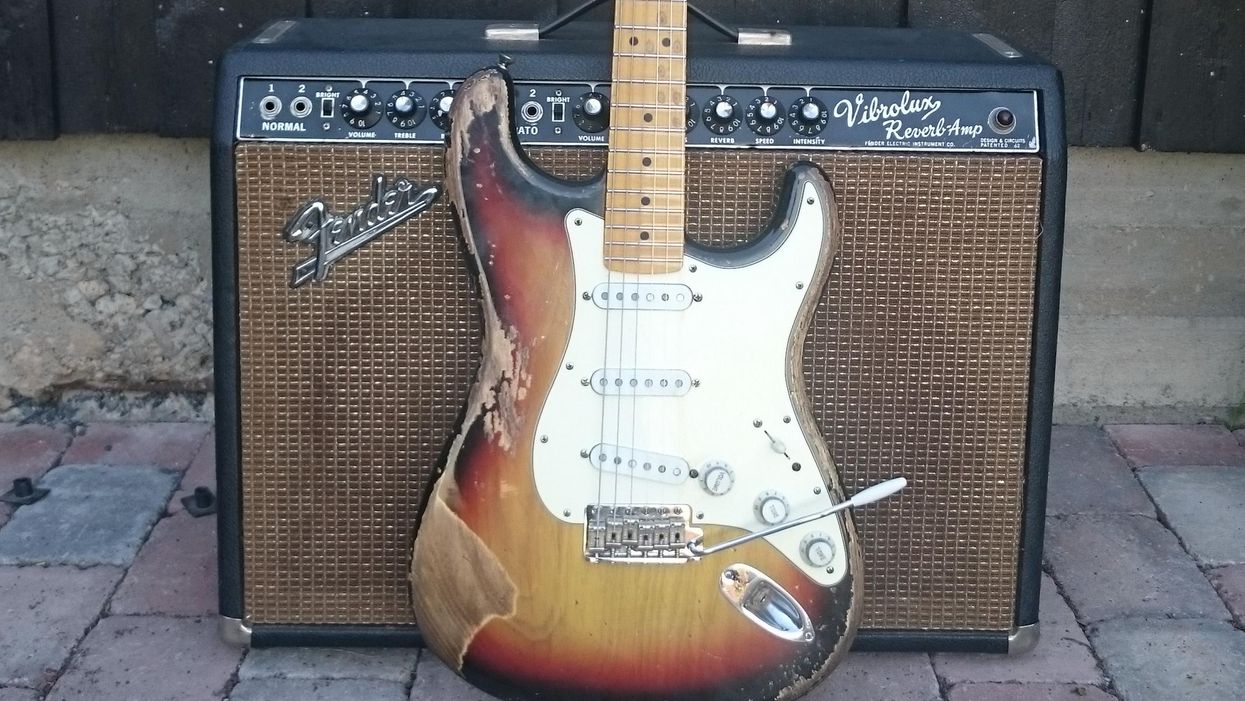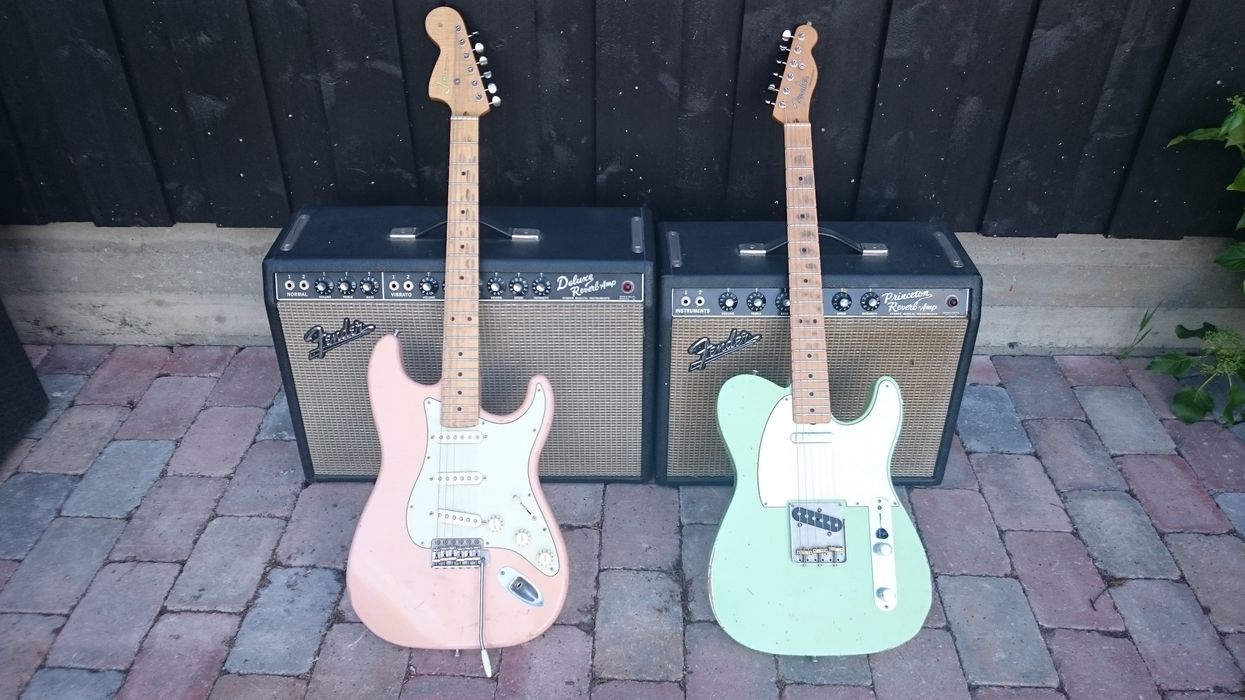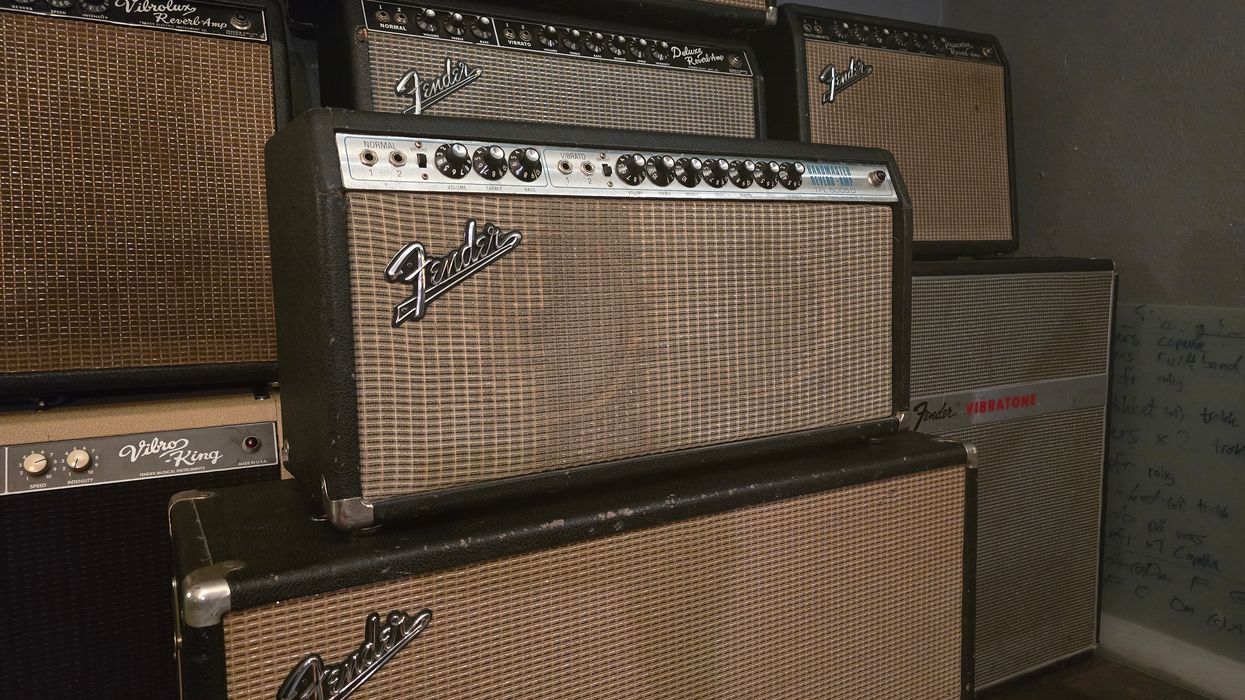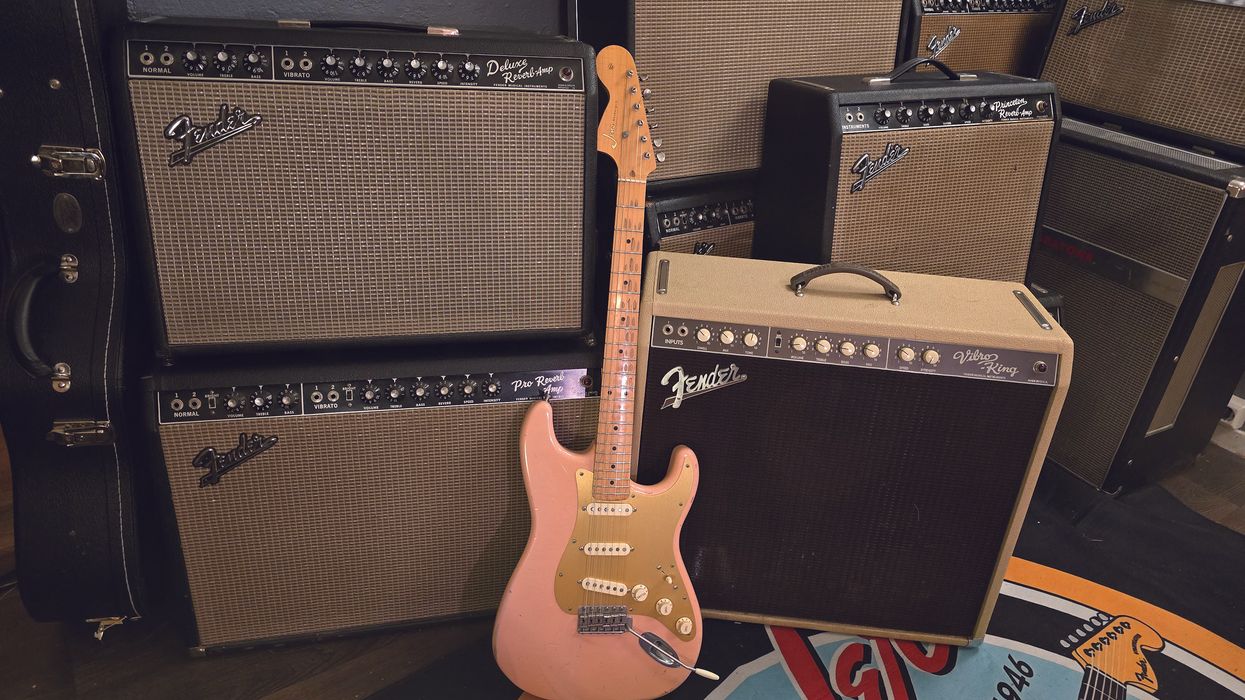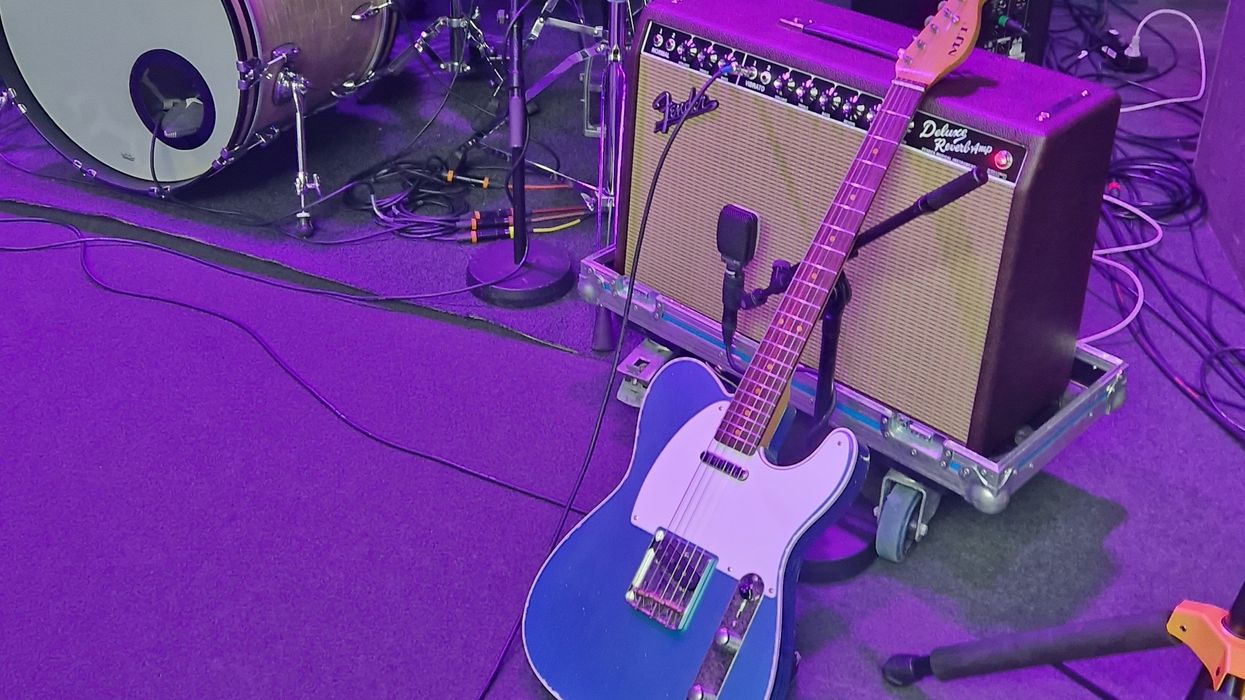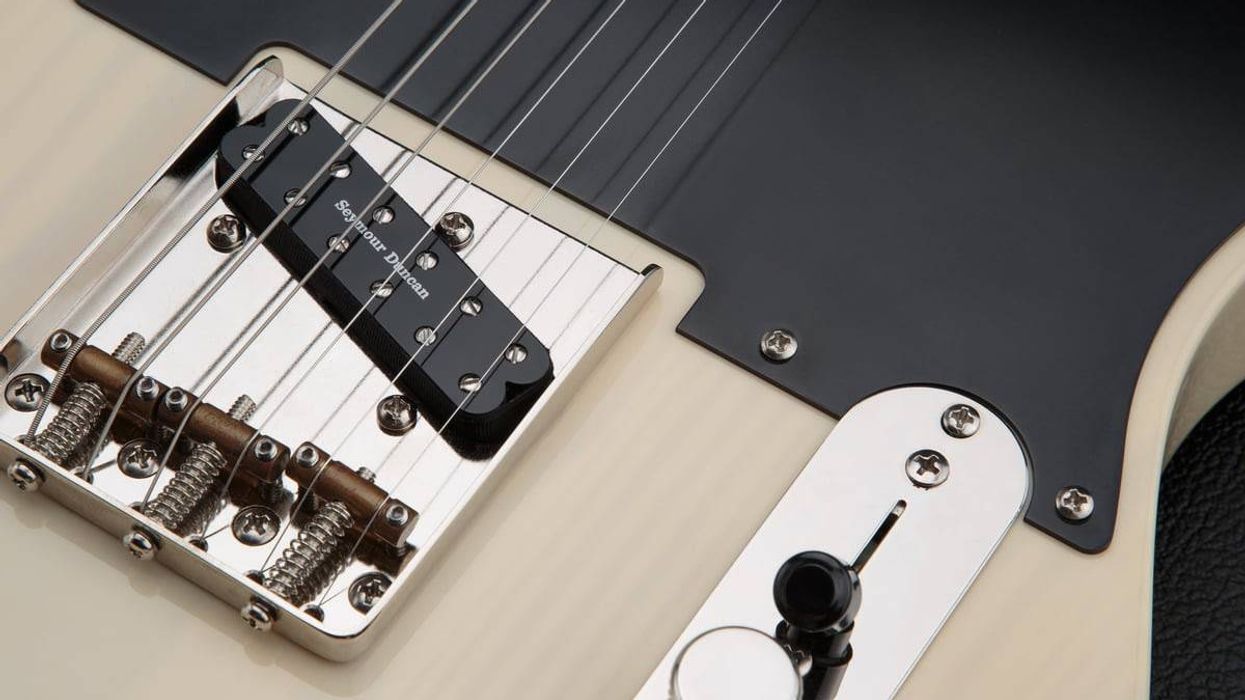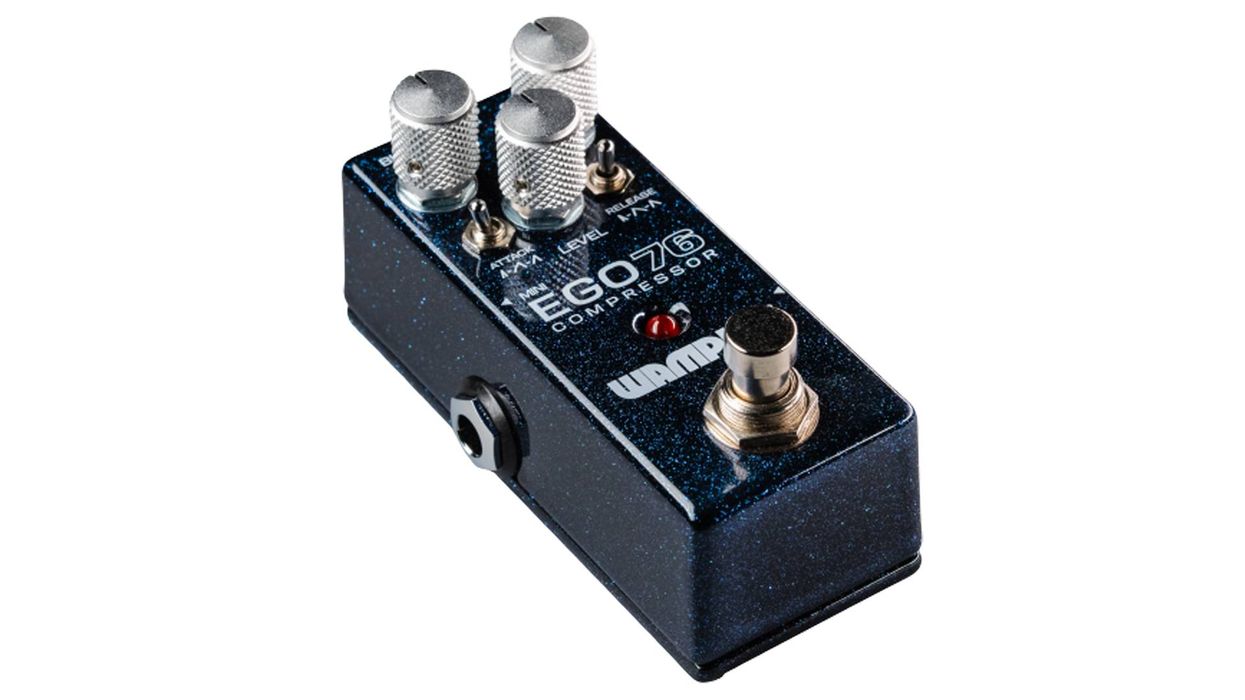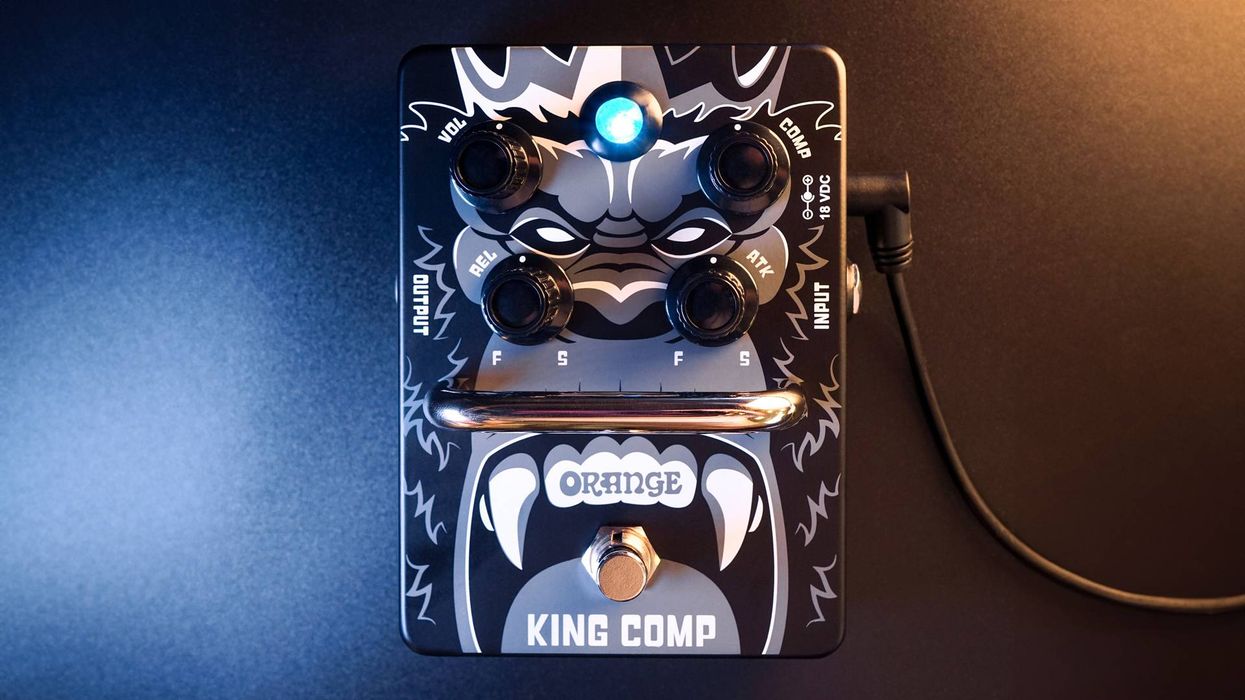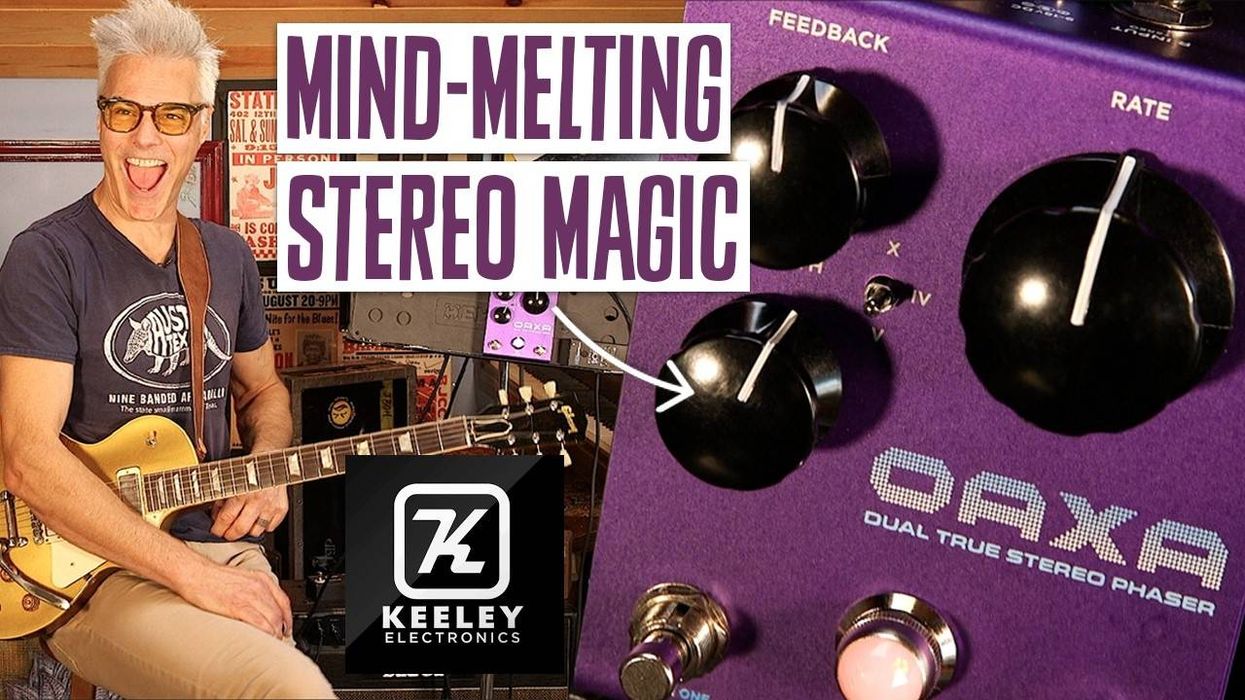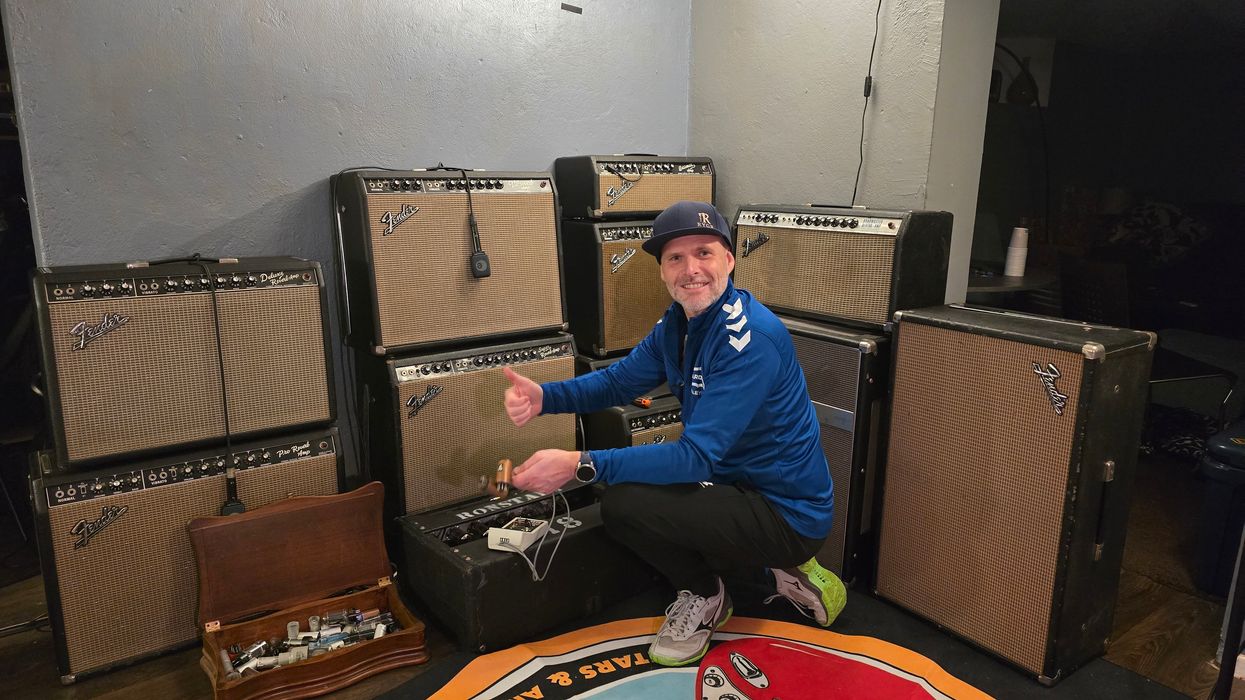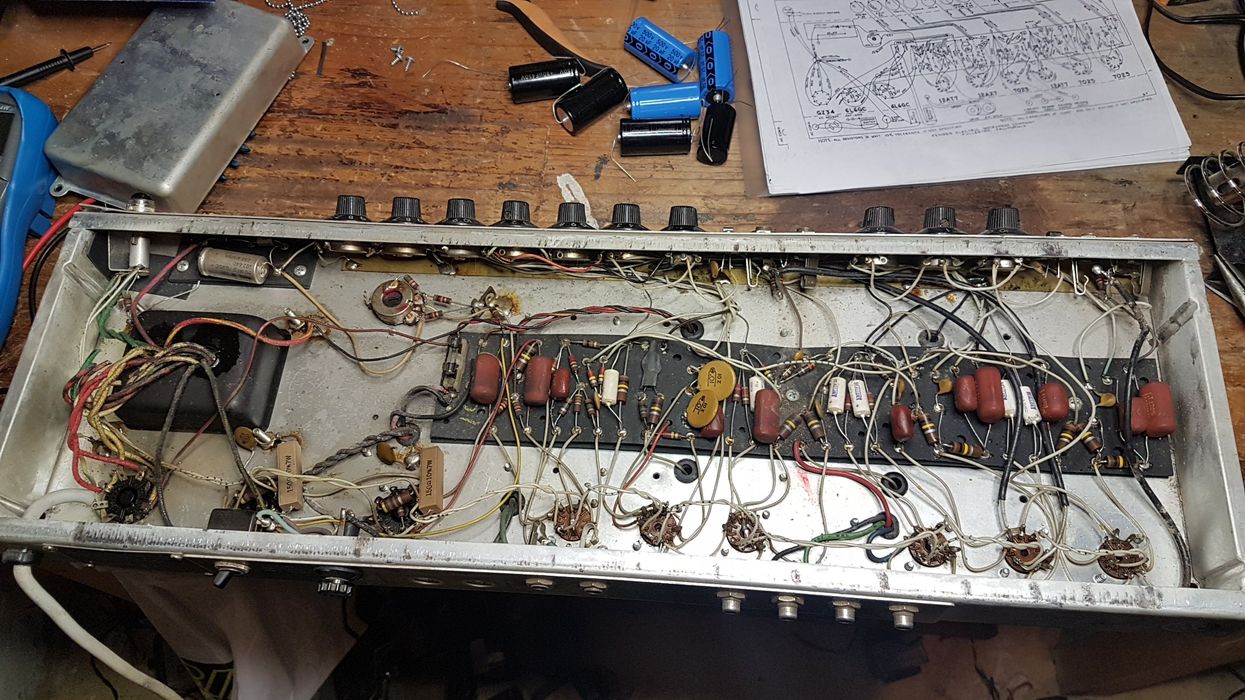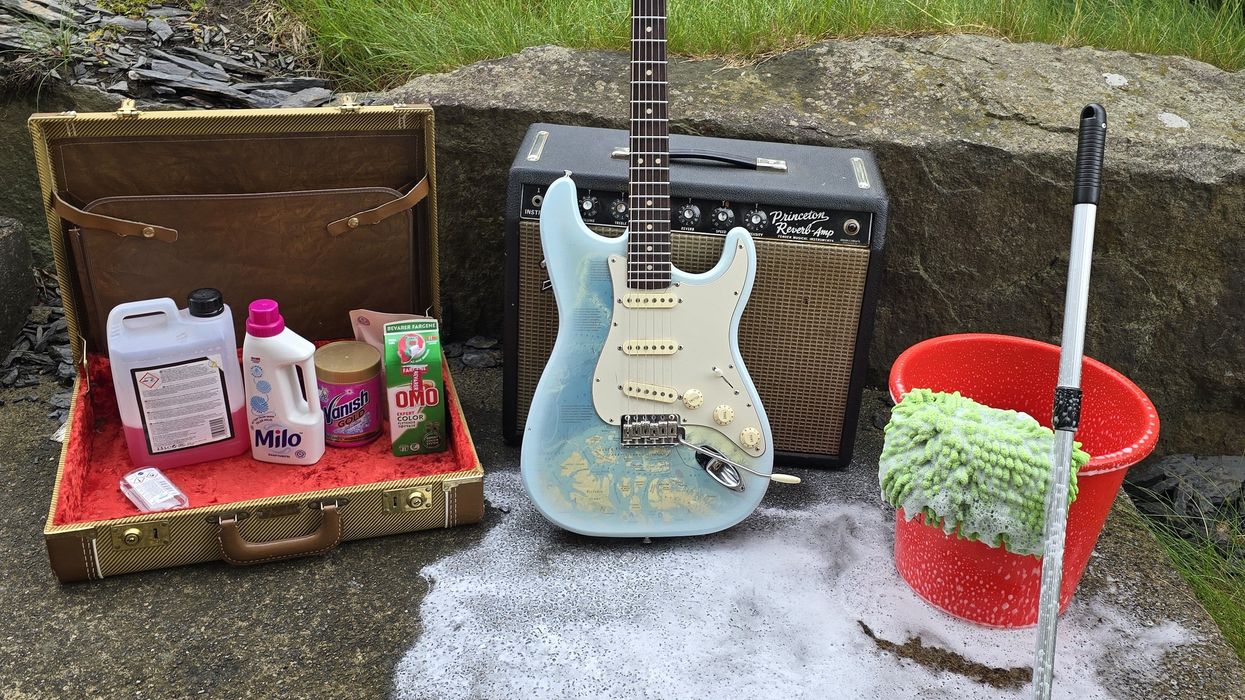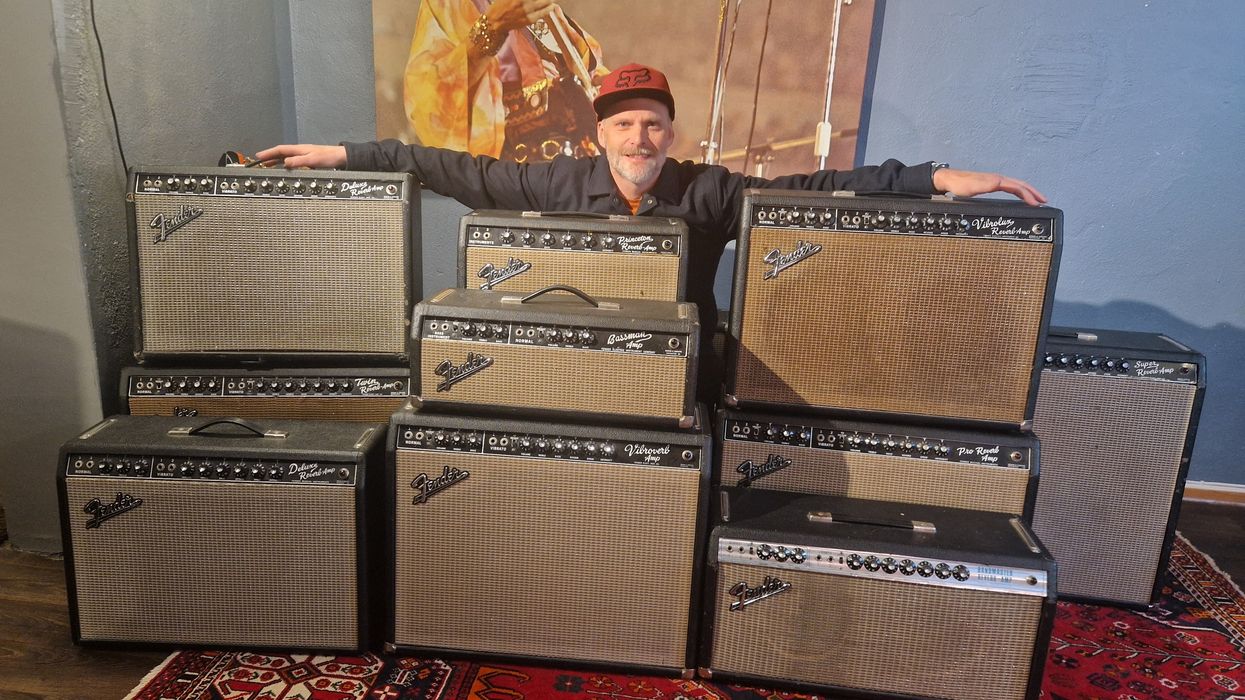This month, I’d like to share the story of my 1964 Fender Vibrolux Reverb. It was a really risky purchase that had some big surprises.
In October 2011, a black-panel Vibrolux Reverb appeared on eBay with a short bid time. It was poorly described with miserable pictures and barely any details or description of condition and origin. Normally I walk away from such auctions, but there was something that caught my eye. First, some red on the speaker labels led me to believe they were perhaps OEM Jensens. And while the amp’s faceplate was unreadable, I thought I saw a long pattern of four words with a very short last word, as in “Fender Electrical Instruments Co.,” and not the more common “Fender Musical Instruments.” What if this was a 1964–65 pre-CBS amp and no one else recognized it? In the automated eBay watch-and-bid sniper tool I used back then, I set up a $2,500 max bid to be placed 10 seconds before the auction ended. When I woke up the next morning, I had bought it for $1,860. I felt both happiness and regret. What had I gotten into?
When the amp arrived in Oslo several weeks later, I was thrilled to see an all-original 1964 Vibrolux Reverb with Jensen C10N speakers—highly desirable among Fender amp players and collectors. I pulled out the chassis and noticed a well-preserved circuit board, with the death cap wired to the ground switch and a non-grounded two-prong power cord. The brown electrolytic Mallory DC and filter caps looked surprisingly nice and were not leaking. The resistors on the power tube sockets also seemed to be in good shape. It even had factory-original RCA tubes.
When I woke up the next morning, I had bought it for $1,860. I felt both happiness and regret. What had I gotten into?
If you see a leak on a 30-year-old electrolytic capacitor, I strongly recommend replacing it. Old electrolytic caps can mean little clean headroom and farty bass, since they can’t hold the required DC voltage when you strike a chord and the massive current starts flowing through the power circuitry to the tube plates. But I decided to not replace any tubes, caps, or resistors before testing the amp. And the grille? Wow! I don’t think I have ever seen such a dark brown—and nice—piece of cloth, with just minor rifts.
I uninstalled the speakers and noticed the cones were marinated with a thick layer of dirt, dust, and smoke particles, probably from a long life in smoky clubs and bars. I screwed them back on the baffle without cleaning them. The wood was still whole and robust, but the Tolex had many scars and cigarette burns, and the faceplate and knobs indicated heavy but not rough usage. Surprisingly, the pots rotated very smoothly. All this indicates that an amp has been played on a regular basis. It looked like a true warrior.
I found a 230/110V step-down transformer and flipped power and standby on for a 15-second interval. Without proper grounding, I was careful to not touch any other electrical equipment in the room, since you don’t know what voltage guitar strings might carry when connected to a non-grounded amp. I expected the regular background noise—scratchy pots and pop and crackle from bad tubes—but the amp was dead quiet! I stroked a heavy E chord and got a loud, mellow, and very dark and midrange-y tone. I flipped the bright switch on and increased the treble to 5, which is normally an extremely bright setting on Fender amps.
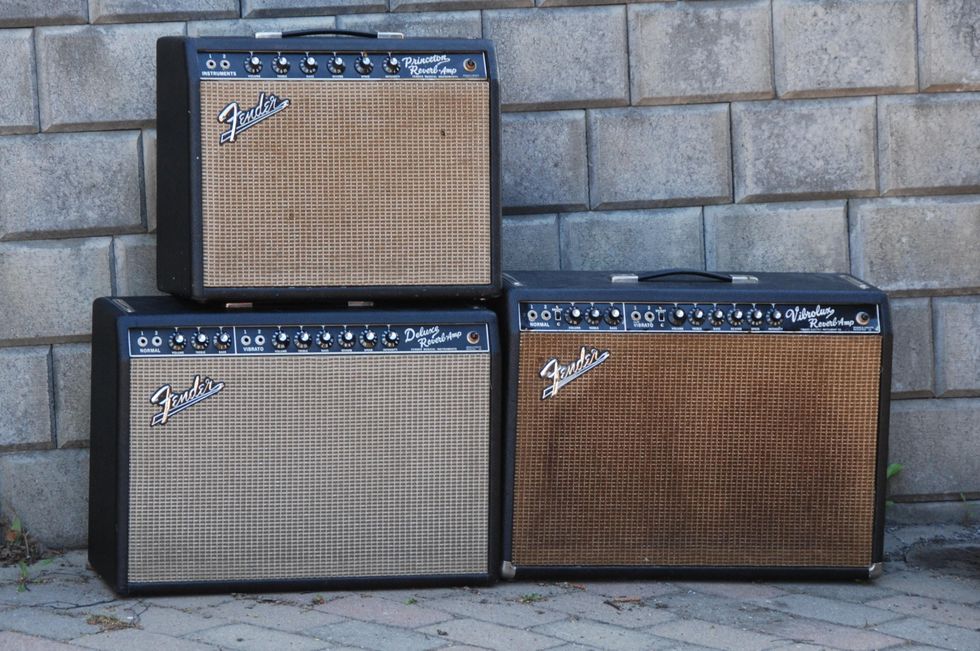
The dusty speaker cones on these old and inefficient speakers filter out the sharp treble—a truly desirable feature in vintage amps. They really make your guitar and pedals sound smoother and creamier, and this was the darkest sounding Fender amp I have ever come upon. What makes the Vibrolux Reverb so good is the balance between the attack and responsiveness of the lightly driven 10" speakers, and the compression from the smaller power and output transformers. I think Fender nailed it with the size, weight, and power of this 35-watt, dual-6L6GC creation.
Later, I installed a grounded power cord and disabled the death cap and ground switch. I got a 230V high-quality power transformer from Mercury Magnetics. It’s 10 years later, and the amp has, incredibly, never failed me. I play it at carefully selected gigs with the original speakers, tubes, and caps still in place. Someday I might consider installing a 25k mid switch or pot on the back in the ground switch slot. This is a must-have and easily reversible mod for Fender amps lacking a mid-pot. It makes them break up much sooner, with a crunch outside the clean Fender tone borderline.
An important point of this story is that we can’t typically expect this kind of luck with vintage amps. Some maintenance is usually required and will make an amp more reliable and durable. Be sure the electrolytic caps are in good condition, and always bring spare tubes to gigs and practices, or bring a backup amp.
64 Fender Vibrolux Reverb vs 65 Super Reverb speakers
Hear Jens Mosbergvik compare his ’64 Vibrolux’s Jensen C10NS speakers against the CTS ceramic speakers found in a ’65 Super Reverb.
